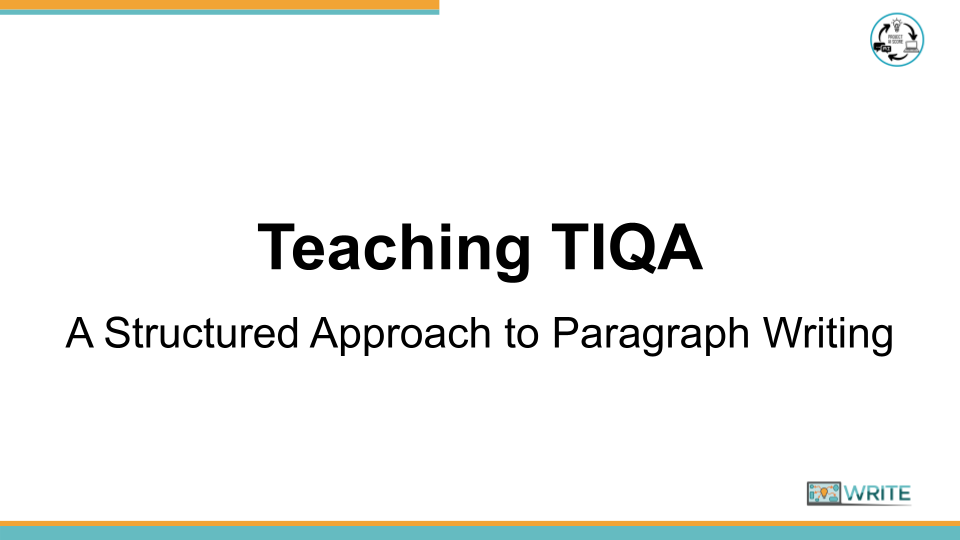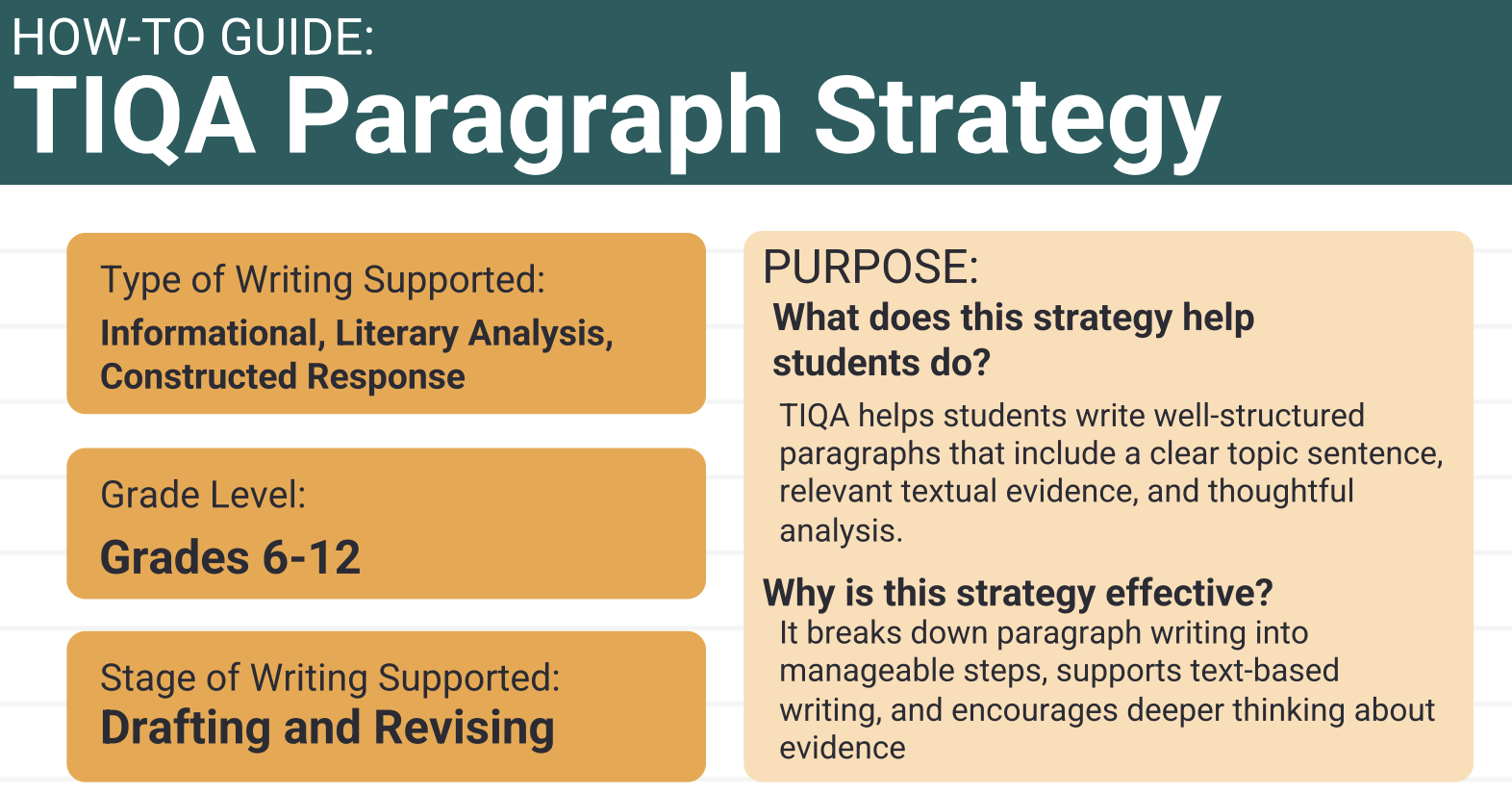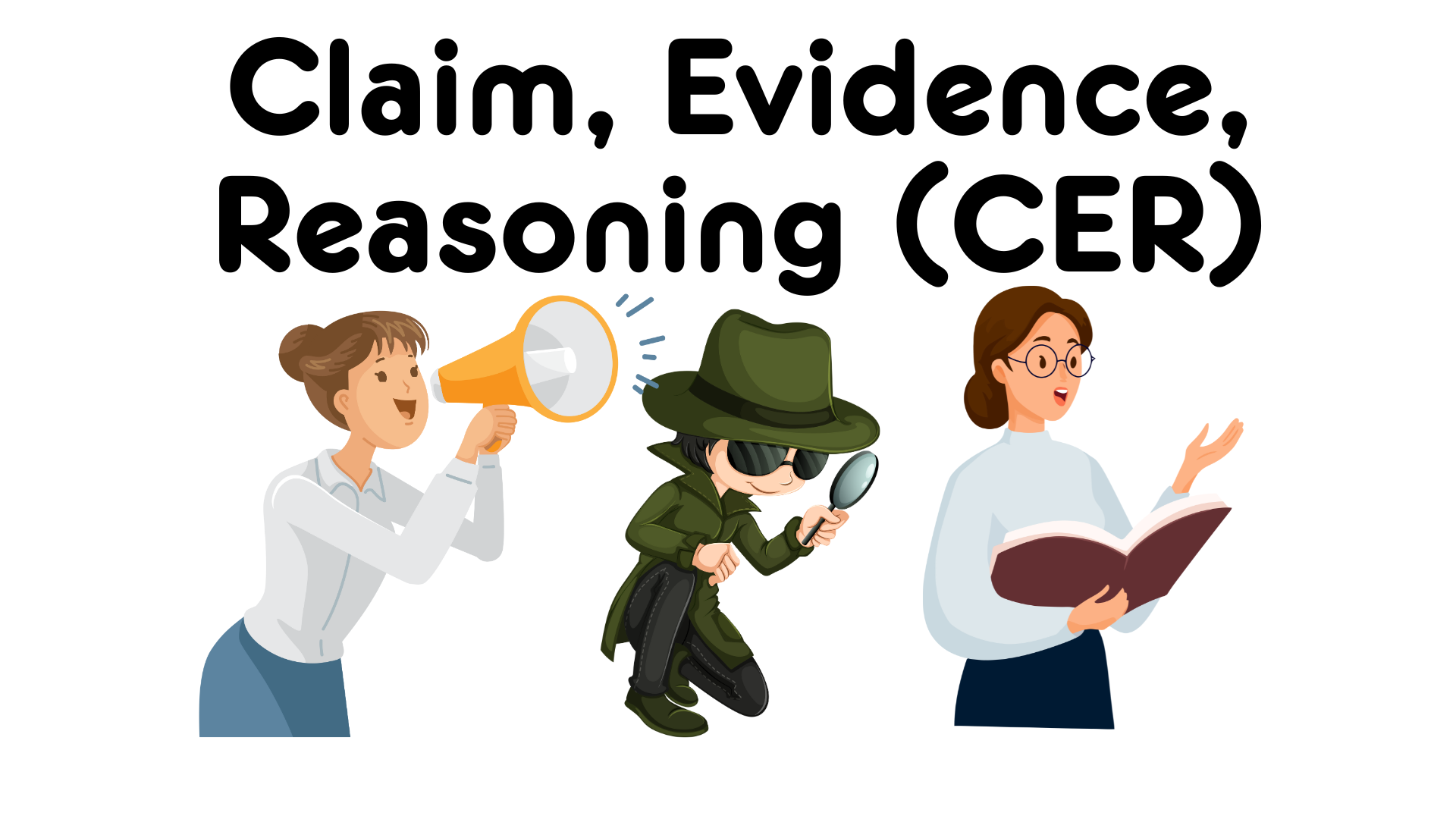Topic, Introduce, Quote, Analyze (TIQA) Strategy
Strategy Parameters
- Genre: Informative
- Grade level: 6-12
- Writing Stage: Drafting, Revising
At-A-Glance
The TIQA paragraph strategy guides students in writing well-structured paragraphs containing a clear topic sentence, relevant textual evidence, and thoughtful analysis
Learn More
Best Practices
- Teach each step of the TIQA strategy explicitly and sequentially, working through the entire process each time.
- Use consistent language for each step (Topic, Introduce, Quote, Analyze) to help students internalize the structure.
- Model how to introduce a source properly, showing students how to name the author, title, or organization before quoting.
- Provide scaffolds like sentence starters, graphic organizers, color-coding, or visual cues to support learners.
- Practice with short texts or videos to keep the focus on the writing process rather than reading comprehension.
Common Pitfalls
- Don’t skip the “Introduce” step, as jumping straight into a quote without context confuses readers and weakens credibility.
- Don’t let students use quotes without analysis; a quote alone does not show understanding, and students must explain its meaning and relevance.
- Don’t allow vague or off-topic evidence; teach students to select quotes that clearly support their topic sentence.
- Don’t assume students know how to analyze; model it often and provide guided practice, as analysis is often the most challenging part.
- Don’t rush the modeling step; use think-alouds to verbalize your slow thinking process for each part of the paragraph.
Implementation Tips
- Preparation and Modeling: The teacher should prepare a model TIQA paragraph using a shared class text and a question that requires evidence-based reasoning. Introduce the strategy with whole-group instruction after the class has read the text, explaining that TIQA helps build reader trust by showing the source of their ideas.
- Introduction and Think-Aloud: Introduce the acronym TIQA and have students repeat it to build familiarity. Model the paragraph one sentence at a time using an interactive screen, thinking aloud as you write each part (Topic, Introduce, Quote, Analyze) and explaining your choices and the purpose of each step.
- Color-Coding and Practice: Use color-coding to help students identify each section, such as using blue for the topic sentence and yellow for the quote. Have students practice identifying TIQA elements using color-coded highlighters or collaboratively build paragraphs using sentence strips.
- Independent Application: For independent practice, provide short texts or videos and have students use a TIQA checklist or rubric to review their own and their peers’ writing. The goal is to help students internalize the strategy and apply it across subjects with growing independence without confining their writing voice once they can meet expectations naturally.





